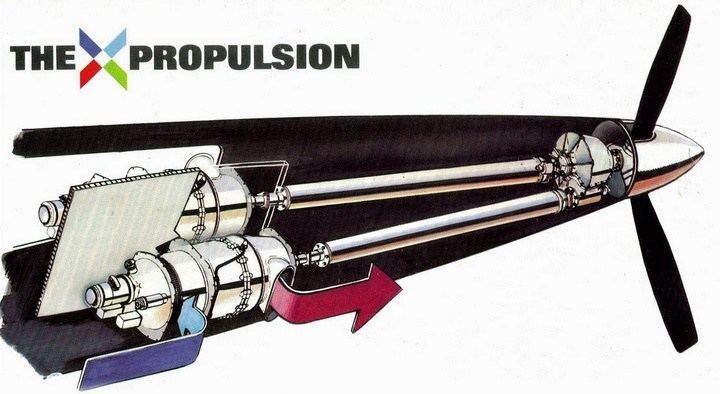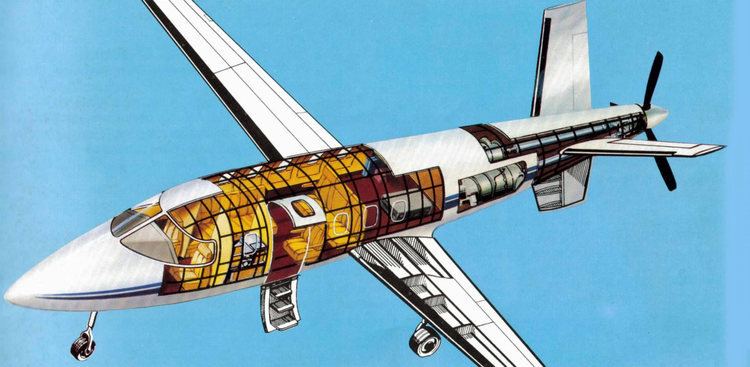Top speed 684 km/h Range 2,869 km Cruise speed 519 km/h | Length 12 m Wingspan 12 m First flight January 1, 1981 | |
 | ||
Engine type Pratt & Whitney Canada PT6 | ||
The LearAvia Lear Fan 2100 was a turboprop business aircraft designed in the 1970s, with unusual configuration. The Lear Fan never entered production.
Contents

History

The aircraft was designed by Bill Lear, but not completed before his death in 1978. It was planned for production to be carried out in Belfast, Northern Ireland, in a new factory built with money from the British Government in an effort to boost employment. After the cancellation of a planned test flight on December 31, 1980 due to technical issues, the first prototype made its maiden flight on January 1, 1981 (a date officially recorded by sympathetic British government officials as "December 32, 1980" in order to secure funding that expired at the end of that year).

The Lear Fan, however, did not enter production. Structural problems were discovered during the pressurization of the all-composite fuselage. The US Federal Aviation Administration refused to issue the prototype with an airworthiness certificate because of concerns that, despite two engines, the combining-gearbox that drove the single propeller was not adequately reliable. Development was abandoned in 1985 after only three aircraft were built.
Design

The aircraft had a pressurized cabin and was designed for a service ceiling of 41,000 ft (12 500 m). It could accommodate two pilots and seven passengers, or one pilot and eight passengers.

It featured a pusher configuration in which two engines powered a single constant-speed three- or four-bladed propeller at the rear of the aircraft. A purpose-built gearbox allowed two Pratt & Whitney Canada PT6B turboshaft engines to supply power via two independent driveshafts. The intent of the design was to provide the safety of multi-engine reliability, combined with single-engine handling in case of failure of one of the engines.
The aircraft was made of lightweight composite materials instead of the more common aluminum alloy.
Another distinctive feature was the Y-shaped empennage. Two stabilizers pointed upward at an angle, similar to those on a V-tail aircraft, and a short vertical stabilizer pointed downward. However, unlike conventional V-tails, there was no pitch/yaw control mixing on the Lear Fan. The downward-pointing rudder also served to protect the propeller from ground strikes during takeoff and landing.
Survivors
The three Lear Fan aircraft are on display at the Museum of Flight in Seattle, Washington, the Frontiers of Flight Museum in Dallas, Texas, and at the Civil Aerospace Medical Institute in Oklahoma City, Oklahoma.
Specifications
Data from Jane's All The World's Aircraft 1982-83
General characteristics
Performance
